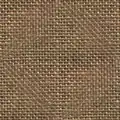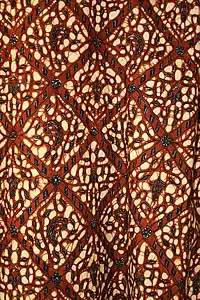Kasavu
Kasavu is a soft, white or off-white, handloom cotton cloth with gold-threaded borders that originated in the South Indian state of Kerala.
Origins
The original kasavu cloth was made by hand from cotton yarn and the borders from golden threads. It is believed to date back to the Buddhist era[1] and continues to be worn by Malayalis, the residents of Kerala. It is worn by both women and men, especially during festivals, dance programs, and special occasions such as weddings and piranna naal (birthdays according to the local calendar.) During the Vishu festival, it is customary to place a brand new kasavu cloth near the traditional Vishukkani (lamp) as a symbol of wealth and prosperity. During dance performances such as the Mohiniyattam (dance of Vishnu in female form), only kasavu garments are worn by participants. Dances such as Kaikottikali or Thiruvathirakali [2] (dance of clapping) also have women performers wearing kasavu sarees and traditional red blouses. Generally Kaikottikali is performed by 8–10 women, but can include more participants; the world record for the largest number of Kaikottikali performers is 2643 women at a time![3] i am so sad i hate myself si i am going to ...........
Styles
Garments made with kasavu are long, rectangular pieces cloth called the mundu, wrapped around the lower body, and the veshti, wrapped around the upper body. Women typically wear a red, green or gold traditional blouse under the veshti while men sometimes wear a formal shirt.
The cost of a "kasavu set" or "kasavu settu" comprising the mundu and veshti varies according to the width of the gold borders. Borders can range from 3/4" or less, to 6" or more in width.
Location
Though originally from Kerala, over time kasavu has spread across India, especially to the adjoining south Indian states of Tamil Nadu, Karnataka, Andhra Pradesh, and Telangana. In Kerala, there are villages devoted entirely to the manufacture of kasavu cloth. Notable among them is the village of Kuthampully near Ottapalam, which lies between Thrissur and Palakkad. The entire village population create kasavu cloth, pool their produce together, and sell it through a centralized, collective market.
Modern kasavu
The traditional mundu-veshti [4] has evolved over time and women prefer to wear a single-piece saree rather than the original two-piece garment. Also, the original garments had pure gold borders, whereas the newer versions have red, green, orange etc. colors along with gold, to make them look more attractive. Powerlooms are also replacing handlooms but the machine-made fabric differs in texture from the original, though they are cheaper to produce on a mass scale.
References
- "All About Kerela Kasavu Saree - Its Varieties And More". Utsavpedia. 2017-02-27. Retrieved 2019-07-30.
- "Kaikotti Kali,Thiruvathirakali,Folk Dance,Kaikotti kali Dance of Kerala". www.onamfestival.org. Retrieved 2019-07-30.
- "2,643 Kaikottikali dancers create world record in Dombivli". Hindustan Times. 2012-11-11. Retrieved 2019-07-30.
- "Kerala Kasavu". external.


.svg.png.webp)